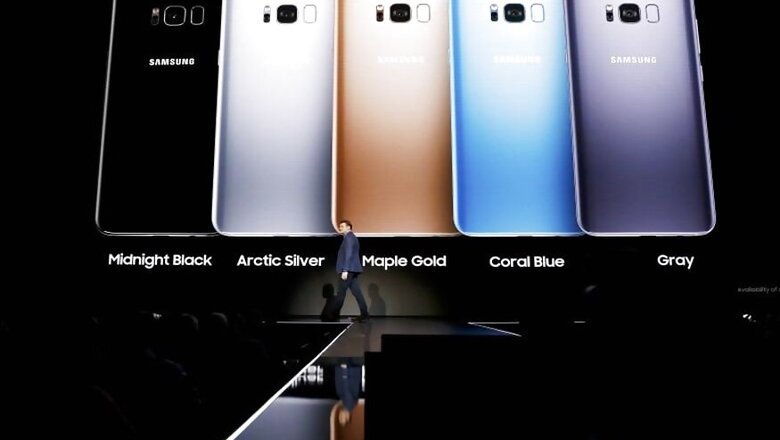
views
Samsung has unveiled its flagship smartphones - the Galaxy S8 and S8+ to the world and the new devices will start shipping from April 21, 2017. However, the company has not confirmed the date for the India arrival of the Galaxy S8 and Galaxy S8+ smartphones
Reports suggest that Samsung might launch the device in India closer to the shipping date that was announced at the launch event in New York City. The S8 and S8+ are being touted as the comeback smartphones for Samsung as the Note 7 battery fire incidents have rendered a blow to its image.
The Samsung Galaxy S8 bring in a few cosmetic changes to the Galaxy S7. A home button is built into the lower section of the display and there is a dedicated side-button for launching the Bixby AI system on the new devices. Unlike the S7, the fingerprint sensor is a rear-mounted one on the S8.
We bring you a complete comparison chart of the differences between the Samsung Galaxy S8 and Galaxy S7:
Display and design
At 5.8-inch and 2,960 x 1,440 pixels, the Galaxy S8 is bigger than Galaxy S7 that has a display size of 5.1 inch. The pixel density of S8 is 570ppi, while the S7 had a higher pixel density of 576 ppi. However, the S8 doen't look that big when compared to the S7, thanks to the thin bezels.
Processor
Galaxy S8 has Qualcomm Snapdragon 835 octa-core chipset; Europe and Asia will get the ones equipped with Exynos 8895 processor. The galaxy S7 was launched with a quad-core Qualcomm Snapdragon 820 SoC.
Storage
The S8 comes with an internal storage of 64 GB and 4GB RAM while the S7 was launched in 32GB/64GB variants (depending on region) with 4GB RAM.
Camera
The just-launched Galaxy S8 and the S7 both have a 12 megapixel primary camera. The front snapper on the S8 has been upgraded to 8 megapixel from S7's 5MP selfie camera.
Battery
The Galaxy S8 and Galaxy S7 are both powered by 3,000mAh non-removable battery.
Sensors
Both the devices will come with Accelerometer, Barometer, Fingerprint Sensor, Gyro Sensor, Geomagnetic Sensor, Hall Sensor, Heart Rate Sensor, Proximity Sensor, RGB Light Sensor, Iris Sensor and Pressure Sensor.



















Comments
0 comment